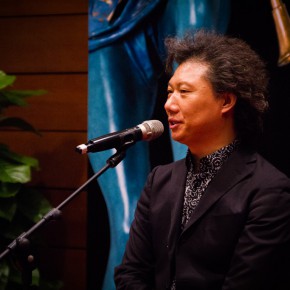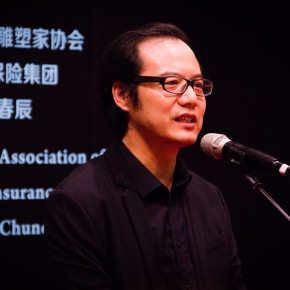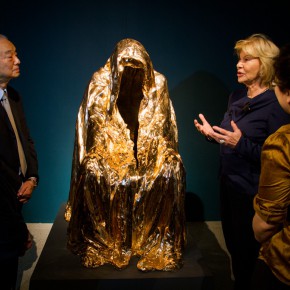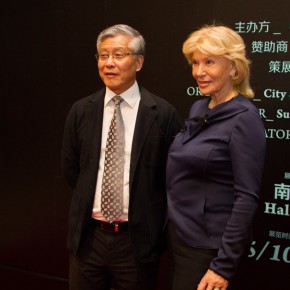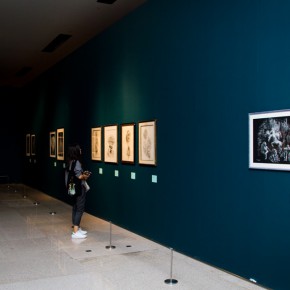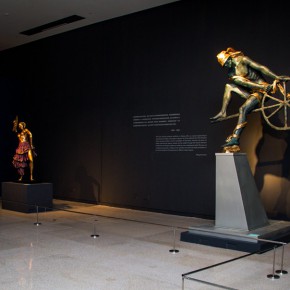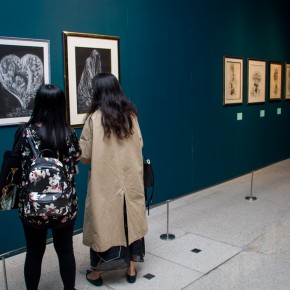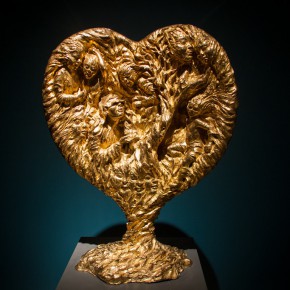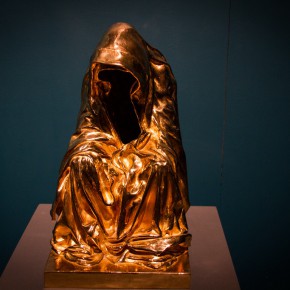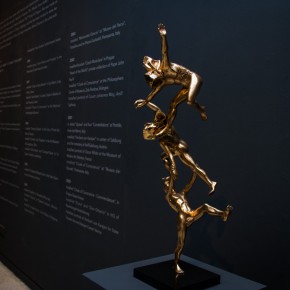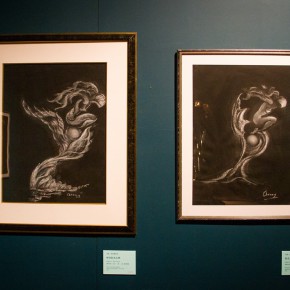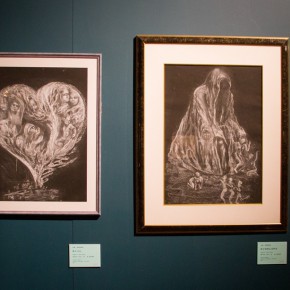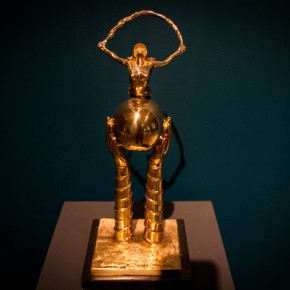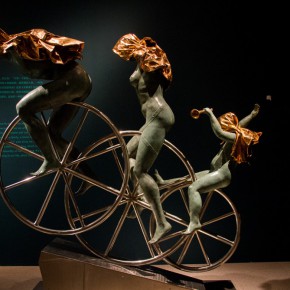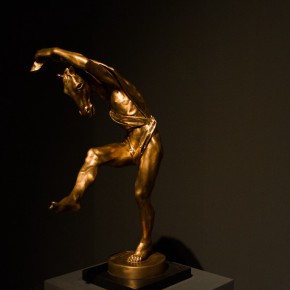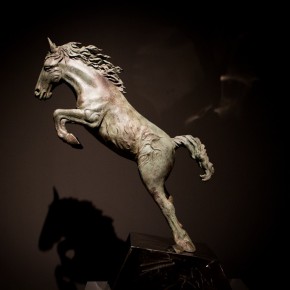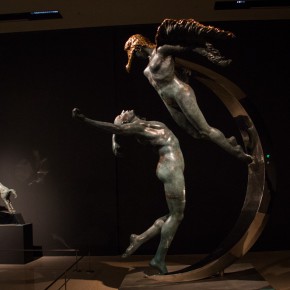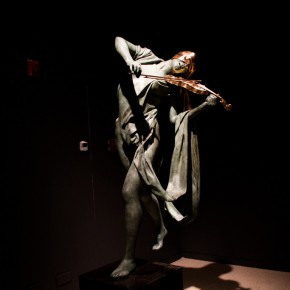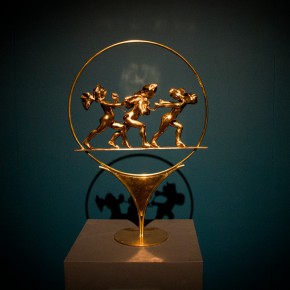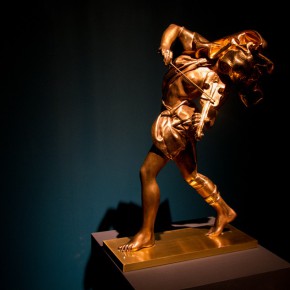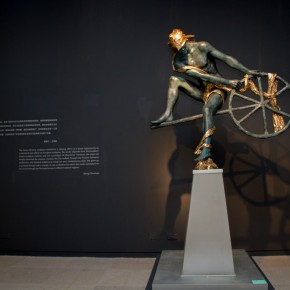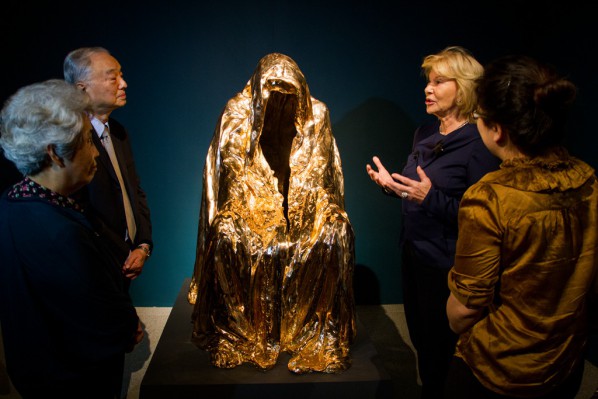
Hosted by the Chinese Urban Sculptors Association, sponsored by Sunshine Insurance Group, curated by Wang Chunchen, Anna Chromy’s Sculpture Exhibition was unveiled at the National Museum of China on October 12. It features a total of 48 large-scale and small sculptures, as well as paintings, including her masterpiece the “Cloak of Conscience”, and the manuscripts of the huge sculpture “The Silk Road” which was specially created for the Pavilion of China at the Expo Milano 2015, and she has been honored by China with the first solo exhibition by any western artist at the National Museum of China in Beijing.
Anna Chromy was born in The Czech Republic, lived in Austria and studied art in France, Salvador Dali was her art teacher. She won the Premio Michelangelo and she was the first female recipient and as a living artist, she owns the most sculptures worldwide, the sculptural works are respectively located in cities in the UK, Luxembourg, Germany, the Czech Republic, Austria, Italy, Monaco, France, China, etc.
It is displayed at the National Museum of China to further integrate Anna Chromy’s Sculptures and the aesthetics of the Chinese humanistic spirit and it also showcases a variety of dimensions of contemporary sculptural development to Chinese sculpture circles. The Vice Chairman of Chinese Urban Sculptors Association Shang Hui addressed the opening ceremony and he said, “Contemporary art is irreversible as it is a visual trend, now many sculptural works are changed to the form of installation, the sculpture presents a trend inclined to installation and idealization, and this topic concerns all the sculptors across the world, Anna Chromy’s work is a model that integrates into contemporary art and easel sculpture. “The Cloak of Conscience” changed the meaning of the traditional sculpture when shaping a human body, discovering the spiritual and cultural connotation. The Deputy Director of the National Museum of China Chen Lvsheng said that the concept, method and form of Anna Chromy’s sculptures were different from sculptures recognized by the general public and her artistic character played a role in the history of contemporary sculpture.
Anna Chromy has deep feelings for Chinese culture, now she is an international consultant for the Chinese Urban Sculptors Association, a distinguished sculptor of the China Academy of Sculpture of the Chinese National Academy of Arts. Many of her works are located in the urban squares in China, such as Galileo’s bronze sculpture located in Guangzhou Scientist Sculpture City, the sculptures themed on sport located in the China Sculpture Institute, the huge sculpture “The Silk Road” which was specially created for the Pavilion of China at Expo Milano 2015 in June. Anna does not only maintain a close contact with China in terms of creation, she is also inspired by a Chinese spirit and traditional culture to a certain extent, in addition, she is inspired by the philosophical realm with Lao Tze’s idea of nature and people and Confucius’s ethics. The sculptor, Director of National Art Museum of China Wu Weishan said she found the “beacon of human nature” in the kindness of Confucius. Anna also said: “My sculptures are derived from the respect to the sculptures of ancient Greek and Rome, Michelangelo, Bernini. Behind these works it reflects humanism, the important relationship between human and nature, is the main power of my creation. And it is interesting that when I first came in contact with Chinese art, I discovered that Chinese art also contained many humanities and natural elements that offered me deep feelings.”
Curator Wang Chunchen said: “Anna Chromy’s sculptures are derived from an European tradition of classical sculpture, is the heritage of a classic paradigm, but it is not a simple inheritance, she no longer works in the style of classical sculpture destroyed by modernism and inherits an elegant and canonical sculptural legacy. Her sculptures also reveal the multiple directions and realistic states in the course of history which also prompts us to stick firmly to art – the classical can’t be abandoned, inheritance depends on the young to take it forward, it is a rule for creation, contemporary direction will not be changed.”
The exhibition opened at the Gallery S8 in the National Museum of China, continuing to October 25.
Text and photo by Zhang Wenzhi/CAFA ART INFO
Translated by Chen Peihua and edited by Sue/CAFA ART INFO



